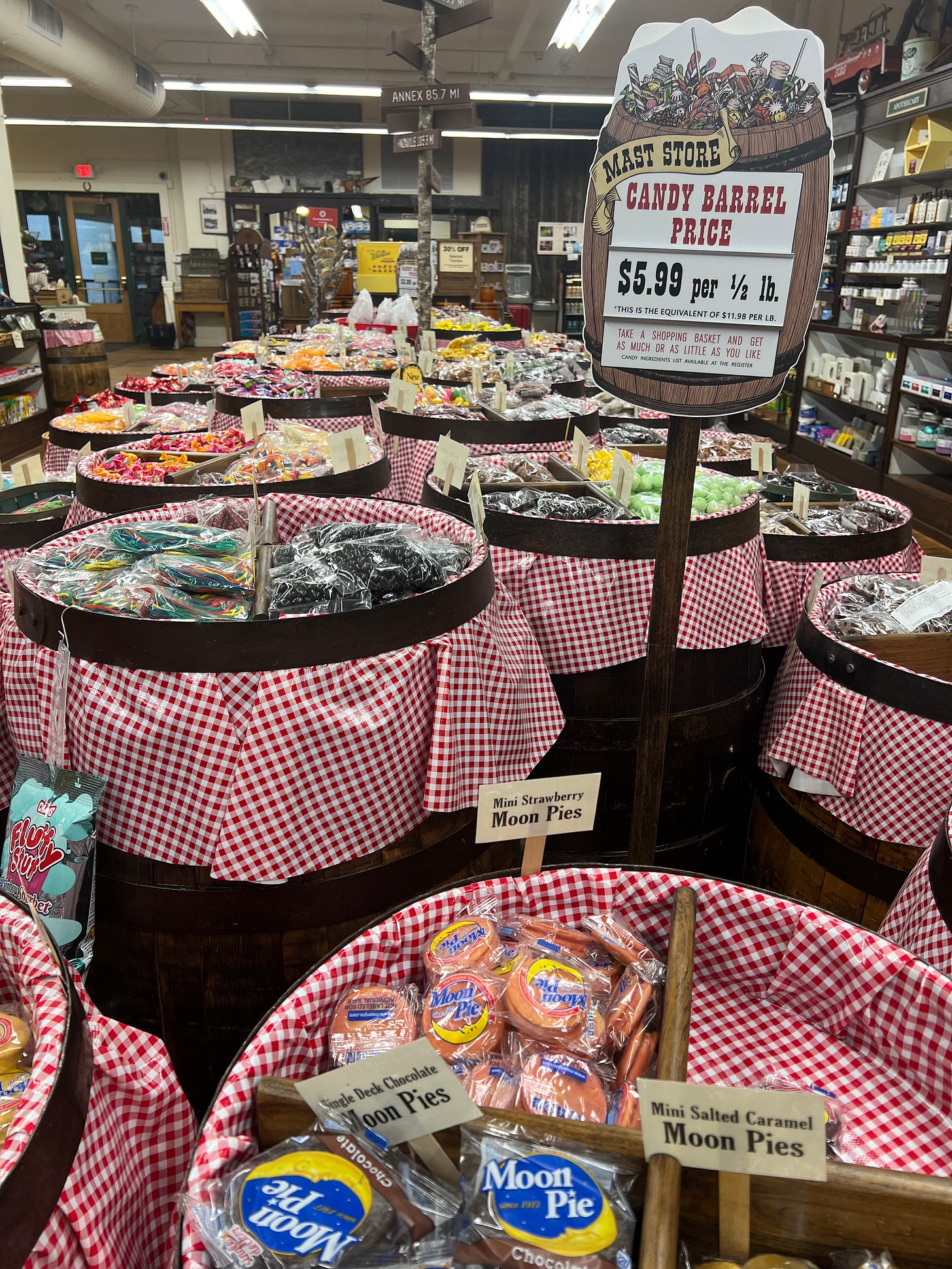In part one of The Shape of the Story, we talked about a clear way to think about structuring short stories: ABCDE. If you’re seeing this for the first time, go to part one for an introduction and a discussion of A (action).
In this post, we’ll break down B,C,D, and E. (The cover photo has nothing to do with this post. I just like candy, and Mast General Store in Winston Salem, North Carolina has buckets and buckets of it.)
Of course, there are many ways to write a story. This format is one I have used in undergraduate writing workshops, as well as flash fiction workshops. Technically, C might easily come before B. After all, there is no story without conflict. But B-before-C works in flash fiction and short stories because of the brevity of the form. In a flash fiction, your background may be only a sentence or two. In a short story, it may be one paragraph.
The problem with front loading a work of fiction with background is that you interrupt the stakes before the story really gets started. Putting background before the conflict is perfectly reasonable in the short story or flash fiction form because the interruption is brief. In a novel, however, I advise against it; because a novel’s background may take the form of an entire chapter or two or three, front loading a novel with background risks lowing the stakes and boring the reader. I refer you to rule number one: don’t be boring.
BACKGROUND
Once you've presented the inciting action, you may want to step back and give a little (but not too much) background information.


